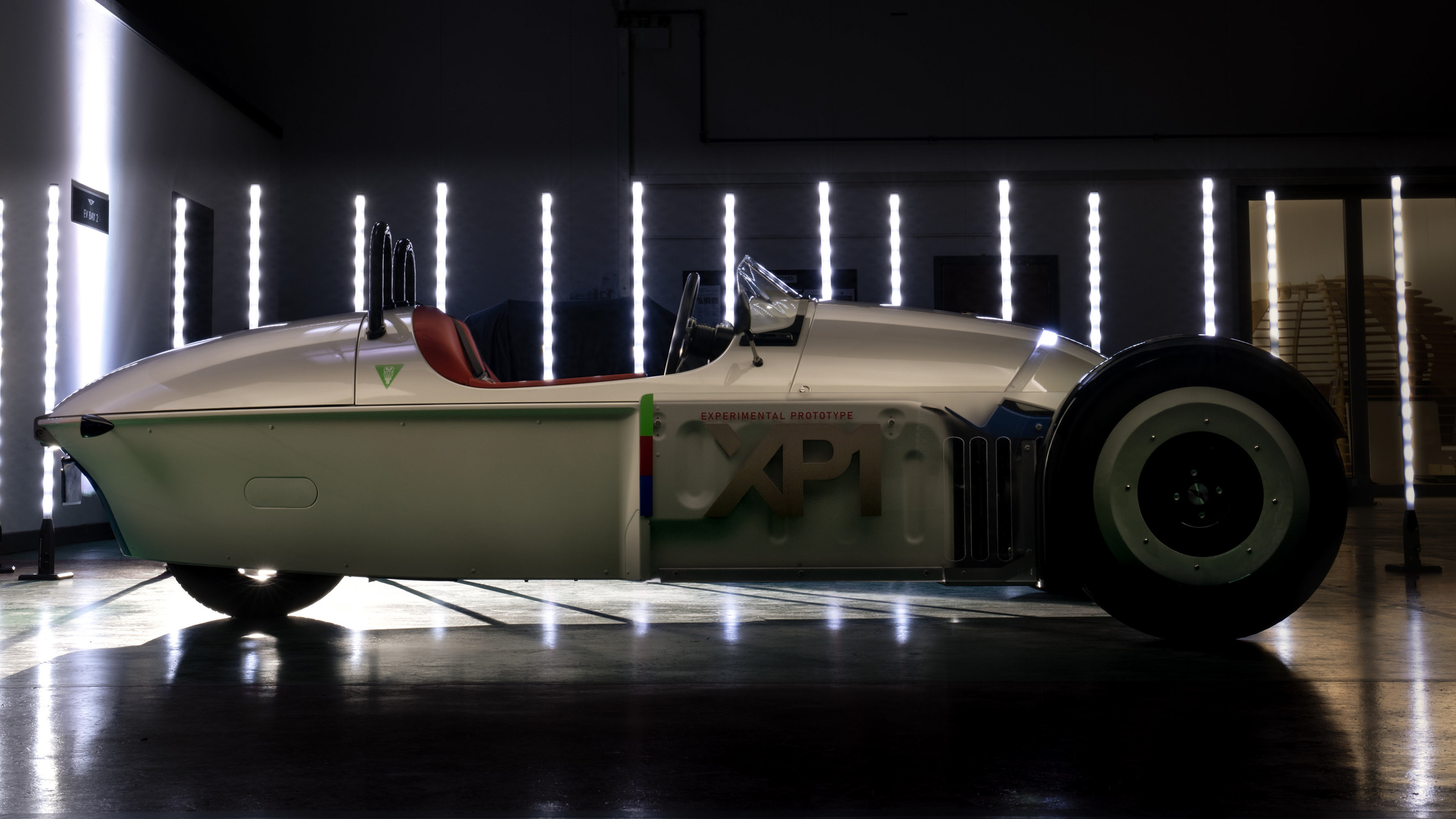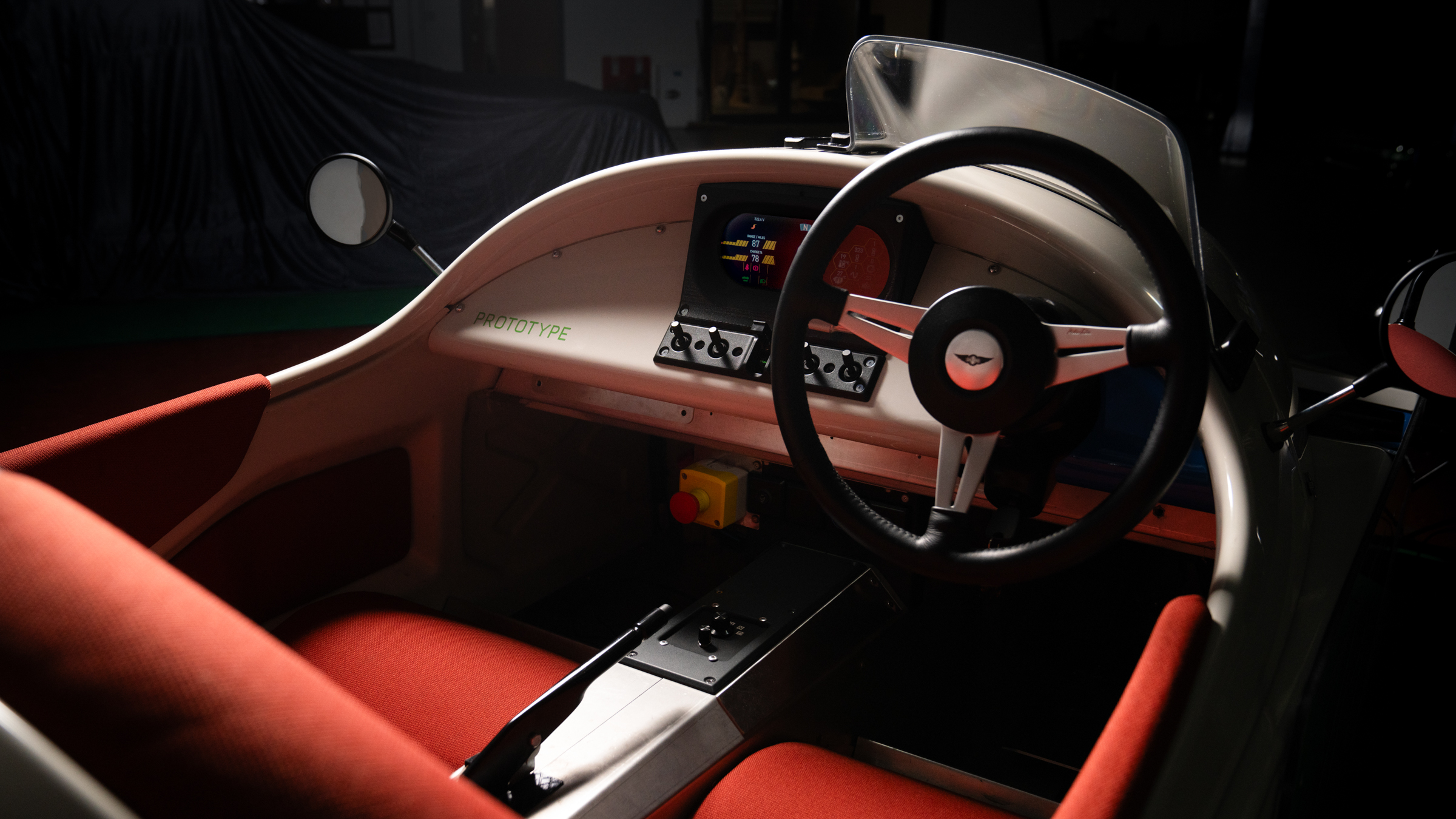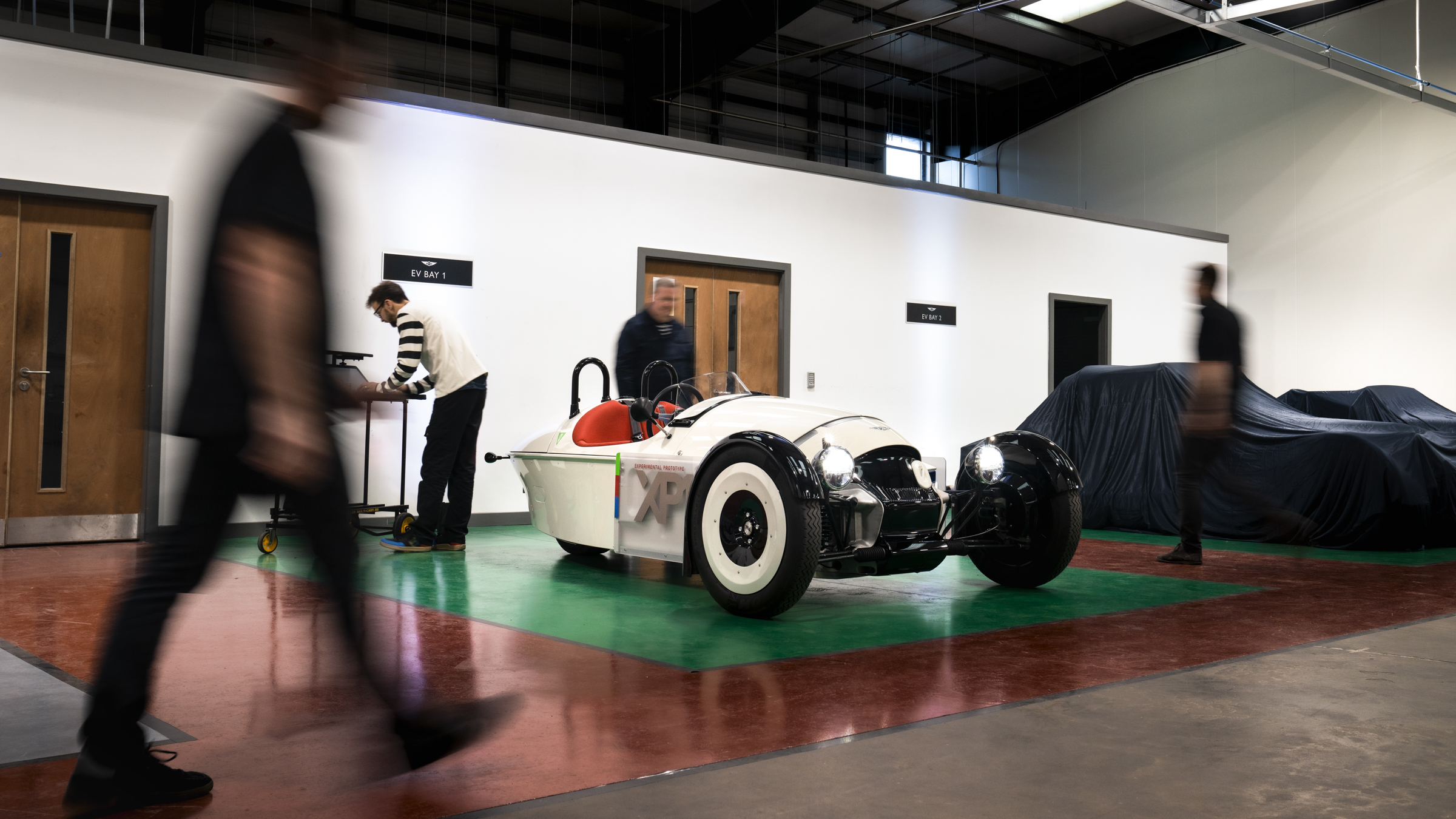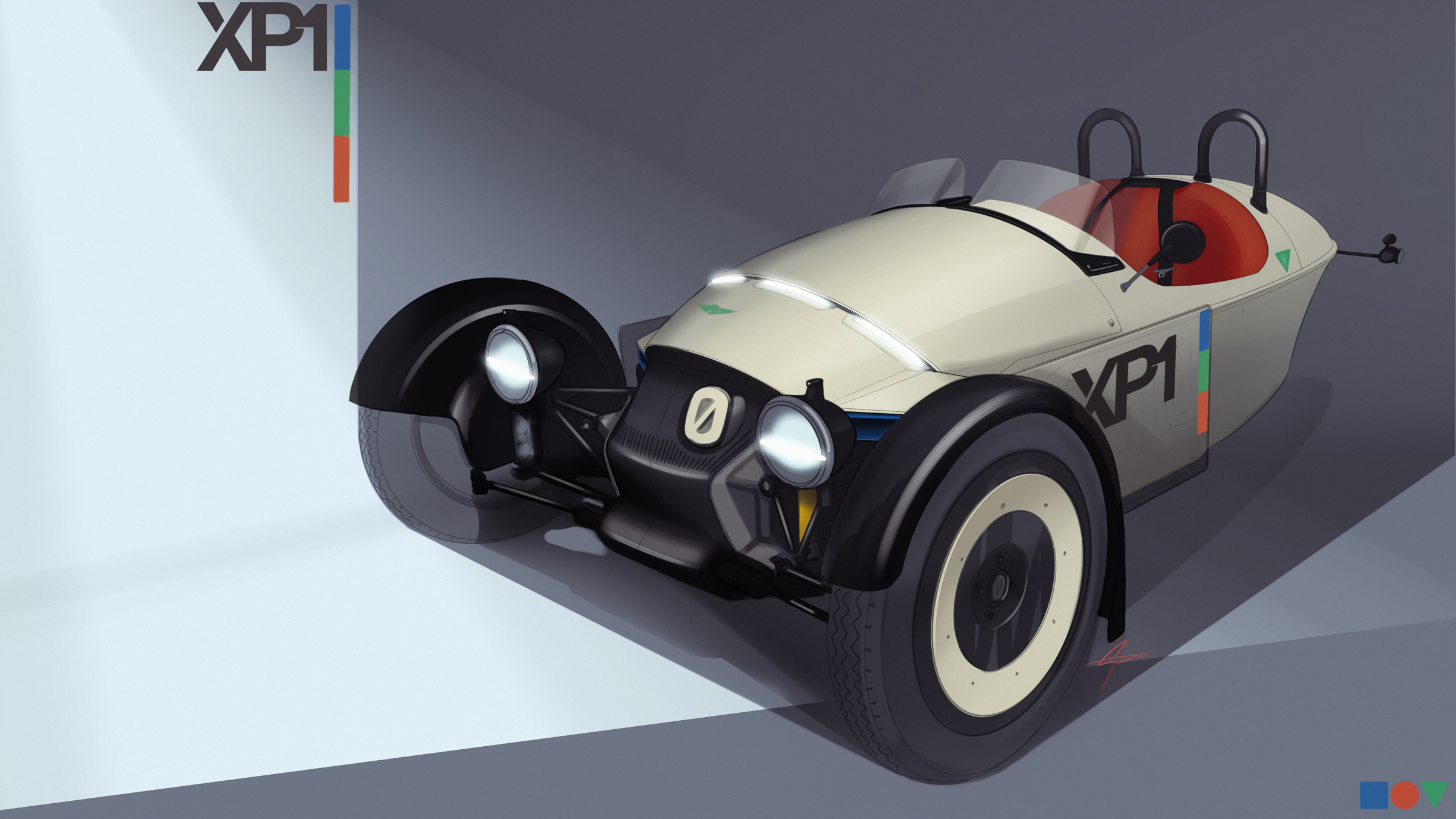The first electric Morgan sounds like it’ll be huge fun to drive
The British sports car maker has revealed a three-wheeled electric prototype


Morgan is best known for building sports cars out of wood, using tools from the 1950s. But it also has an eye on the future, and has today revealed the prototype for its first electric car. Called the XP-1, it looks similar to the company’s Super 3 but replaces the engine with a battery and motor, and will act as a testbed for future plug-in Morgan cars.
This isn’t the first time Morgan has experimented with electricity. The company showed off a concept called the EV3 back in 2016, based on the then-current 3 Wheeler and with the aim of delivering a production version in 2018. The first 19 examples were dubbed the 1909 Edition (a nod to Morgan’s year of birth) and were due to be sold for £52,500 apiece at the Selfridges department store. Supply issues stopped the EV3 in its tracks, however, and the production car never arrived.

Now though, an EV is firmly back on Morgan’s roadmap. Although not intended for production, Morgan says the XP-1 prototype “is being used to help develop an understanding of manufacturing EV technology and how to transfer the driving characteristics of internal combustion engine Morgan sports cars into electric.”
This is a key consideration for all sports car manufacturers. While everyone else can focus on range and efficiency, or use electricity to produce mind-bending straight line performance, sports car makers are faced with making EVs that are enjoyable. Key ingredients here are a low weight, engaging driving dynamics, compact dimensions, and a whole heap of fun. Morgan needs to build an EV with character, not a soulless appliance that looks the part but drives like every other battery-powered car.

Mat Hole, chief technical officer at Morgan, told T3: “This project for us isn’t about creating a vehicle with huge range…Although we’ve been impressed by the efficiency of [XP-1], that’s not been one of the goals that we set out to achieve."
Hole added: “We decided we should make the car as authentic as it possibly can be…we think with XP-1, the way it drives, it is authentically a Morgan. It drives differently to the Super 3, but everyone who has driven it so far has come back laughing and with a massive smile on their face.”
Morgan is dialling up the smile factor by tinkering with how the car accelerates off the line, and how the motor deploys its torque. Many current EVs serve a huge dollop of torque as soon as the driver presses the accelerator, launching off the line and posting a supercar-beating 0-60 mph time, but quickly running out of steam. Hole explains: “We’ve tempered that a little bit in favour of giving it a somewhat more linear throttle progression, so you get more pedal travel. It feels like the powertrain builds and comes alive.”
Get all the latest news, reviews, deals and buying guides on gorgeous tech, home and active products from the T3 experts
So instead of delivering a massive slap on the back, Morgan’s first EV sounds like a car that eggs its driver on, encouraging them to press the accelerator further and to explore its performance, not be intimidated by it.

Developed over the past 12 months, the XP-1 prototype is being used to understand EV driving characteristics and powertrain development, but also help Morgan staff with EV competence and training, and act as a platform for creating and testing new ideas.
An example here is the humble electronic parking brake, which Morgan is yet to use on any of its cars. The prototype will help the company develop one, along with the hill hold system it’ll enable. Then there’s the way a car shows its battery percentage; there will be a readout on the dashboard, of course, but what about on the outside? XP-1 lets the design team experiment with that too.
Another key factor is sound. Morgans are known for their powerful BMW-sourced engines and sporty exhausts, but the shift to electricity creates an acoustic blank canvas. Instead of using BMW’s electric motors and batteries, Morgan is doing its own thing. This involves pairing a motor and battery pack, then working out how to create a soundtrack that is both interesting and authentic.
Where most EV makers try to completely disguise the whirring motor with a synthesised noise pumped through the sound system, Morgan is going for authenticity.
Hole explained to T3: “We’ve been able to tune the sound out of the [motor and inverter]. We’ve been able to identify features in the hardware and in the software that we can deploy on the inverter to allow us to basically make quite an interesting noise, which is genuinely authentic, so the sound that you hear is actually coming from the hardware, rather than being synthesised…It’s really about that analogue driving feel.”

On that note, Morgan says it will work on accelerator and regenerative braking calibration to “create a range of driving modes featuring a mix of driving characteristics,” – breaking yet more new ground for the sports car maker. The company also stresses the importance it puts on making a lightweight EV. It says the XP-1 prototype’s weight is comparable to the 635kg Super 3 on which it is based.
Electric cars have to produce an external sound at low speeds to make pedestrians aware of their presence. This is usually a hum – or a classical melody, in the case of the Fiat 500e – but at Morgan they’ve created a system that mimics the car from the 1960s cartoon series The Jetsons. What’s more, Morgan has created this sound not with audio speakers, but with actuators that use the chassis itself as a sound generator.

Based on the Super 3’s aluminium platform, the XP-1 prototype is “not intended for production,” Morgan says, but will embark on a comprehensive test programme over the next 18 to 24 months, where it’ll be used to develop new EV technologies.
Since the prototype is a “visible project” instead of an early look at any one specific car, Morgan says it will share updates about the development of XP-1, including conversations with customers and journalists. It also says the prototype has CCS fast charging and supports bi-directional charging, so it can be used to power other devices, and improved aerodynamics mean a third less drag compared to the Super 3.
It’s always exciting to see the first EV from any car company, but I’m especially keen to see what Morgan has up its sleeve. This is a tiny firm that could well have faced extinction with the death of internal combustion. Instead, it wants to find a way to not only survive, but to offer a lightweight and engaging sports car that sticks close to its analogue roots, without taking the shortcut of relying on EV components from BMW. It’s going its own way, and I can’t wait to see what the result will be.
Alistair is a freelance automotive and technology journalist. He has bylines on esteemed sites such as the BBC, Forbes, TechRadar, and of best of all, T3, where he covers topics ranging from classic cars and men's lifestyle, to smart home technology, phones, electric cars, autonomy, Swiss watches, and much more besides. He is an experienced journalist, writing news, features, interviews and product reviews. If that didn't make him busy enough, he is also the co-host of the AutoChat podcast.
